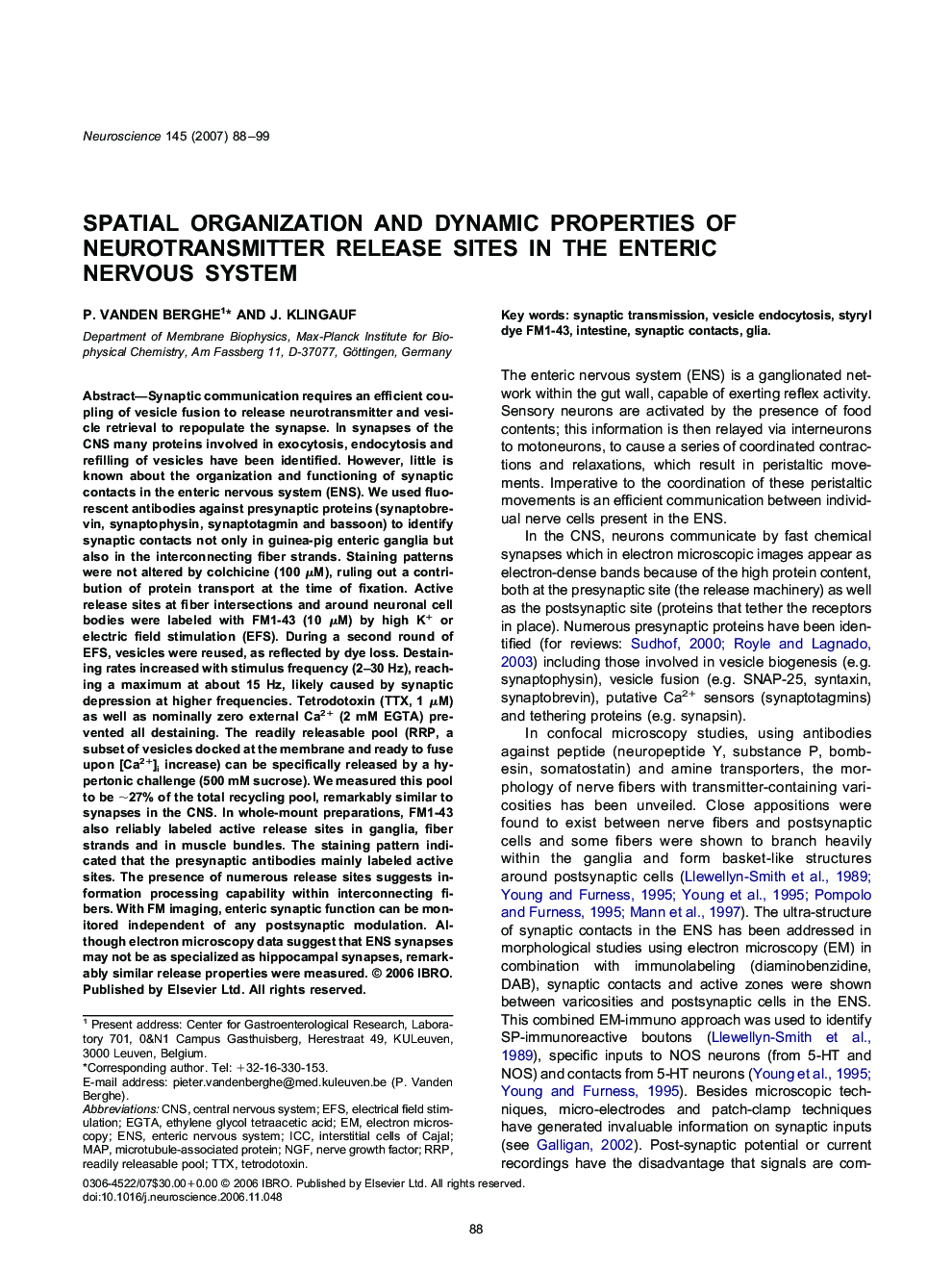| کد مقاله | کد نشریه | سال انتشار | مقاله انگلیسی | نسخه تمام متن |
|---|---|---|---|---|
| 6278519 | 1295823 | 2007 | 12 صفحه PDF | دانلود رایگان |
عنوان انگلیسی مقاله ISI
Spatial organization and dynamic properties of neurotransmitter release sites in the enteric nervous system
دانلود مقاله + سفارش ترجمه
دانلود مقاله ISI انگلیسی
رایگان برای ایرانیان
کلمات کلیدی
ENSICCEGTARRPTTXNGFEFsethylene glycol tetraacetic acid - اتیلن گلیکول تتراستیک اسیدsynaptic transmission - انتقال سیناپسیreadily releasable pool - به راحتی استخر آزادtetrodotoxin - تترو دوتوکسین Electrical field stimulation - تحریک الکتریکی میدانCNS - دستگاه عصبی مرکزیIntestine - رودهinterstitial cells of Cajal - سلولهای بینابینی Cajalenteric nervous system - سیستم عصبی روده ایcentral nervous system - سیستم عصبی مرکزیnerve growth factor - فاکتور رشد عصبElectron microscopy - میکروسکوپ الکترونیmap - نقشهmicrotubule-associated protein - پروتئین مرتبط با میکروتوبولGlia - یاختههای گلیال
موضوعات مرتبط
علوم زیستی و بیوفناوری
علم عصب شناسی
علوم اعصاب (عمومی)
پیش نمایش صفحه اول مقاله

چکیده انگلیسی
Synaptic communication requires an efficient coupling of vesicle fusion to release neurotransmitter and vesicle retrieval to repopulate the synapse. In synapses of the CNS many proteins involved in exocytosis, endocytosis and refilling of vesicles have been identified. However, little is known about the organization and functioning of synaptic contacts in the enteric nervous system (ENS). We used fluorescent antibodies against presynaptic proteins (synaptobrevin, synaptophysin, synaptotagmin and bassoon) to identify synaptic contacts not only in guinea-pig enteric ganglia but also in the interconnecting fiber strands. Staining patterns were not altered by colchicine (100 μM), ruling out a contribution of protein transport at the time of fixation. Active release sites at fiber intersections and around neuronal cell bodies were labeled with FM1-43 (10 μM) by high K+ or electric field stimulation (EFS). During a second round of EFS, vesicles were reused, as reflected by dye loss. Destaining rates increased with stimulus frequency (2-30 Hz), reaching a maximum at about 15 Hz, likely caused by synaptic depression at higher frequencies. Tetrodotoxin (TTX, 1 μM) as well as nominally zero external Ca2+ (2 mM EGTA) prevented all destaining. The readily releasable pool (RRP, a subset of vesicles docked at the membrane and ready to fuse upon [Ca2+]i increase) can be specifically released by a hypertonic challenge (500 mM sucrose). We measured this pool to be â¼27% of the total recycling pool, remarkably similar to synapses in the CNS. In whole-mount preparations, FM1-43 also reliably labeled active release sites in ganglia, fiber strands and in muscle bundles. The staining pattern indicated that the presynaptic antibodies mainly labeled active sites. The presence of numerous release sites suggests information processing capability within interconnecting fibers. With FM imaging, enteric synaptic function can be monitored independent of any postsynaptic modulation. Although electron microscopy data suggest that ENS synapses may not be as specialized as hippocampal synapses, remarkably similar release properties were measured.
ناشر
Database: Elsevier - ScienceDirect (ساینس دایرکت)
Journal: Neuroscience - Volume 145, Issue 1, 2 March 2007, Pages 88-99
Journal: Neuroscience - Volume 145, Issue 1, 2 March 2007, Pages 88-99
نویسندگان
P. Vanden Berghe, J. Klingauf,